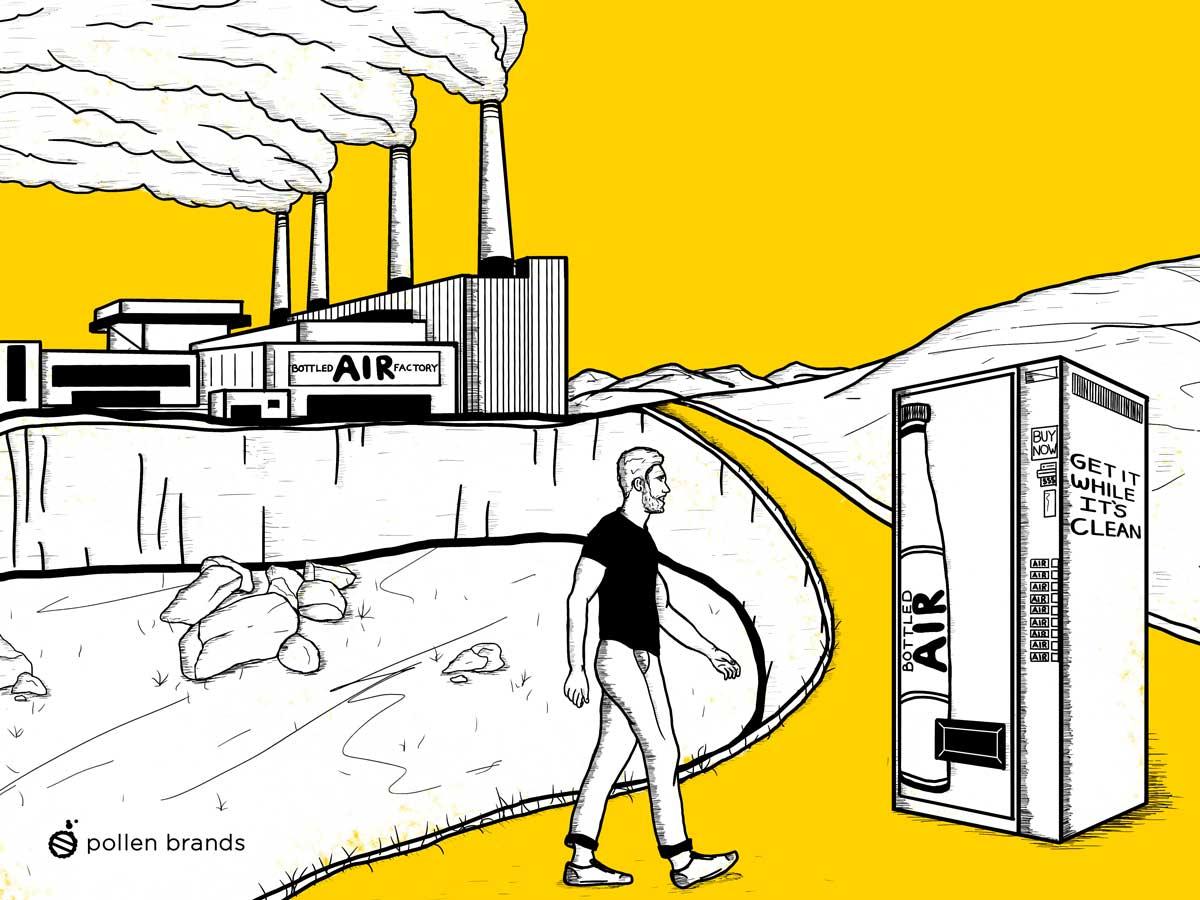
Editor's Note: This post originally appeared on Pollen Brands.
By John Natoli
All around today’s business world, there’s a lot of talk about “innovation.” Supply chains, service delivery, formulation, marketing, and countless other areas of business are undergoing rapid change from a variety of angles. Innovation is the new go-to for both entering a market and maintaining a competitive lead. Where “differentiation” may have been the buzzword not too long ago, innovation requires us to actually be different, not just look different.
This is a good thing, right? Well, it can be. It’s human nature to innovate; the word “innovation” itself carries a positive connotation. In fact, innovation is what’s helped made us so successful as a species. The wealthiest, most powerful nations and businesses in the world tend to innovate. Leaders and luminaries such as Steve Jobs and Henry Ford have often been innovators–even disruptors.
But all innovation is not created equal. Atomic bombs, automatic weapons, Agent Orange, fracking, high fructose corn syrup and bottled water (and now, bottled air) all qualify as innovations. Depending on the setting, innovation can mean different things and have different implications. One might argue, somewhat optimistically, that plastic-bottled water was the “innovation” in response to a demand for clean, portable water; but could that demand have also been met by innovations in municipal water systems, water treatment practices, bottling, and equitable water access around the world? A water crises pop up worldwide, have the matter has largely been delegated to charities and NGOs–while the business world’s “innovations” have been limited to smaller caps and slightly less wasteful plastic bottles.
As a founder of Pollen Brands, a purpose-driven design agency, and a member of the Centre for Social Innovation in New York City, I’ve seen many entrepreneurs rise to the challenge of purposeful innovation. Collectively, let’s call this groundswell Innovation 2.0. As William McDonough states in his influential book "Cradle to Cradle," “Here’s where redesign begins in earnest, where we stop trying to be less bad and we start figuring out how to be good.”
Innovation 2.0 is about innovating with a broader social and environmental purpose, while keeping an eye toward market demands. As entrepreneurs, we free ourselves from the chains of market “demands,” and instead carefully evaluate the underlying needs which drive the market; in fact, the very term “market demands” is being more accurately referred to as “market needs,” accordingly distilled to reflect its more meaningful purpose. Much as a doctor whose patient “demands” a particular medication, Innovation 2.0 entrepreneurs pause to evaluate the symptoms and underlying causes and prescribe a treatment that meets the patient’s needs.
Over the next few years, it will become increasingly imperative that businesses innovate in this way. Consumers are increasingly disillusioned with solution after solution, innovation after innovation being thrust upon them, only to soon thereafter witness the negative effects of these ‘innovations’–as oceans fill with plastic waste, chemicals seep into our water supplies, and childhood obesity becomes more widespread. As FastCompany recently inferred, “To Keep Their Best Millennials, Companies Need A Social Purpose." Members of today’s new workforce want to use their skills and talents to innovate meaningfully.
Today, more than ever, we have the ability to evaluate and predict the outcomes of options that lay before us. We have the chance to truly hear the voice of the “market”–real people, with real needs, around the world–like never before. Innovation 2.0 is our responsibility to respond thoughtfully and purposefully, for the long-term benefit of the planet and its people. If done well, this could be the moment in our grandchildren’s history books when they can finally breathe a proud sigh of relief.
John Natoli is a strong believer in the importance of a “purpose-first” life, and he founded Pollen Brands to bring a sense of purpose to his craft: brand cultivation.
John is always in search of clients who are driven by a desire to make the world a better place in some way. He knows that it can be hard to both further one's brand, keep an organization growing and running smoothly, and continue to operate conscientiously and with one's original sense of purpose in mind.
John is proud to say he's brought purpose-driven brand cultivation to clients in a huge variety of industries, working with entrepreneurs and startups, as well as more established companies and nonprofits.
John lives in New Jersey with his wife, Heather, who’s a holistic healer. He’s the proud father of four nature-loving, home-schooled kids. When he’s not helping his clients merge their sense of purpose with the growth of their brand, John enjoys organic gardening, spirituality, martial arts, and the outdoors.
TriplePundit has published articles from over 1000 contributors. If you'd like to be a guest author, please get in touch!














